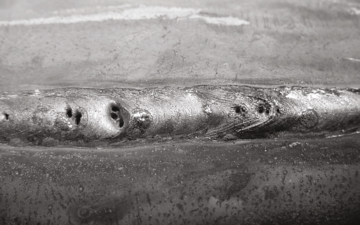What is Porosity in Welding: Comprehending Its Causes and Enhancing Your Skills
What is Porosity in Welding: Comprehending Its Causes and Enhancing Your Skills
Blog Article
Porosity in Welding: Identifying Common Issues and Implementing Ideal Practices for Prevention
Porosity in welding is a pervasive issue that often goes undetected up until it triggers significant troubles with the honesty of welds. This typical problem can compromise the strength and toughness of welded structures, posturing security risks and bring about expensive rework. By comprehending the root triggers of porosity and executing effective prevention strategies, welders can substantially enhance the quality and integrity of their welds. In this discussion, we will certainly check out the vital aspects contributing to porosity formation, examine its destructive impacts on weld efficiency, and talk about the best methods that can be adopted to lessen porosity occurrence in welding procedures.
Common Sources Of Porosity

Using dirty or damp filler materials can introduce contaminations into the weld, contributing to porosity problems. To reduce these typical causes of porosity, detailed cleansing of base steels, proper shielding gas selection, and adherence to optimum welding specifications are important techniques in accomplishing top quality, porosity-free welds.
Influence of Porosity on Weld High Quality

The existence of porosity in welding can significantly compromise the architectural honesty and mechanical homes of bonded joints. Porosity develops voids within the weld metal, deteriorating its total stamina and load-bearing capacity.
Welds with high porosity degrees have a tendency to exhibit lower impact strength and lowered capacity to warp plastically before fracturing. Porosity can hinder the weld's ability to effectively send forces, leading to premature weld failure and possible safety and security dangers in vital frameworks.
Best Practices for Porosity Avoidance
To boost the structural honesty and top quality of welded joints, what particular actions can be applied to lessen the occurrence of porosity throughout the welding procedure? Using the correct welding strategy for the particular product being bonded, such as changing the welding angle and gun setting, can further avoid porosity. Normal examination of welds and instant removal of any problems recognized throughout the welding process are necessary practices to protect against porosity and produce top notch welds.
Value of Correct Welding Strategies
Applying correct welding strategies is paramount in making certain the architectural integrity and quality of bonded joints, building on the structure of efficient porosity prevention steps. Welding strategies directly affect the sites overall Our site stamina and durability of the bonded structure. One key element of correct welding methods is maintaining the right warm input. Too much warm can result in raised porosity because of the entrapment of gases in the weld pool. Alternatively, inadequate heat may result in insufficient fusion, developing possible weak factors in the joint. In addition, utilizing the proper welding specifications, such as voltage, existing, and take a trip speed, is critical for attaining sound welds with minimal porosity.
Moreover, the option of welding process, whether it be MIG, TIG, or stick welding, should straighten with the details demands of the project to guarantee ideal results. Proper cleaning and preparation of the base metal, in addition to selecting the appropriate filler material, are likewise vital components of proficient welding strategies. By adhering to these best techniques, welders can decrease the risk of porosity formation and produce top quality, structurally sound welds.

Evaluating and Quality Assurance Procedures
Testing treatments are vital to detect and protect against porosity in welding, guaranteeing the toughness and longevity of the final product. Non-destructive screening techniques such as ultrasonic testing, radiographic testing, and visual evaluation are commonly used to determine prospective flaws like porosity.
Post-weld examinations, on the various other hand, examine the final weld for any kind of problems, consisting of porosity, and confirm that it satisfies specified requirements. Executing an extensive high quality control strategy that includes complete testing procedures and inspections is critical to reducing porosity issues and guaranteeing the total high quality of bonded joints.
Verdict
Finally, porosity in welding can be a common issue home that influences the top quality of welds. By determining the common reasons of porosity and carrying out best practices for prevention, such as appropriate welding techniques and testing actions, welders can make sure high top quality and trustworthy welds. It is important to prioritize avoidance methods to minimize the event of porosity and maintain the integrity of welded frameworks.
Report this page